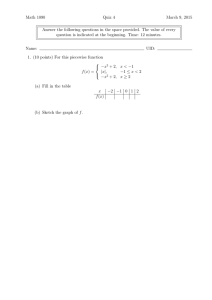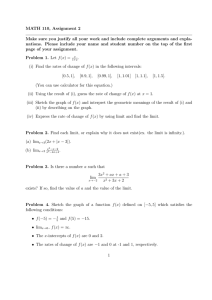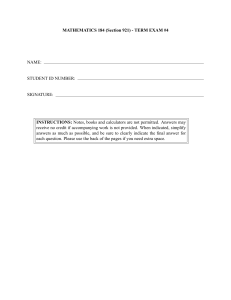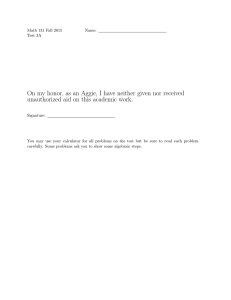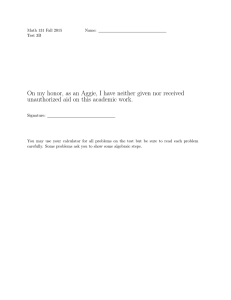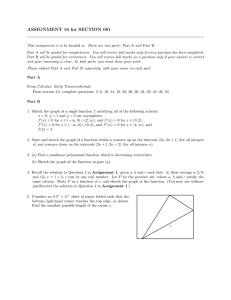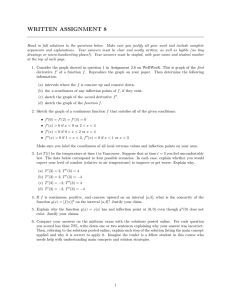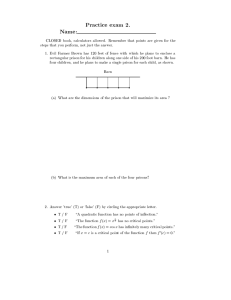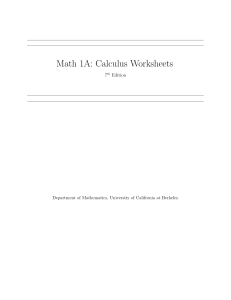MATH 100 V1A
advertisement
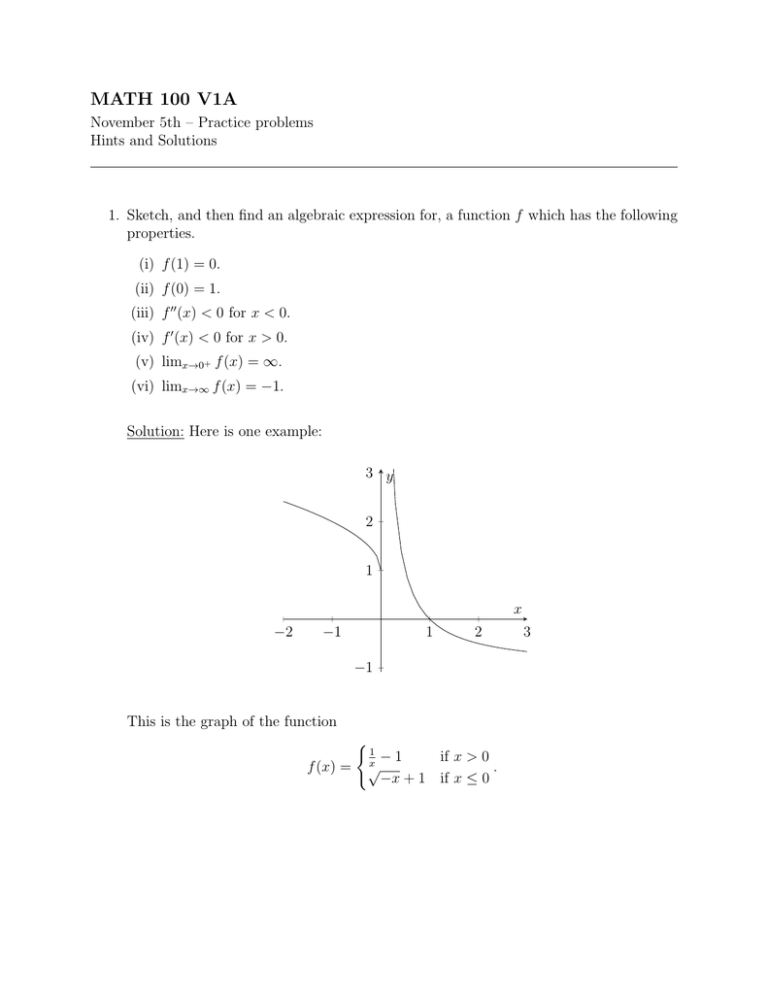
MATH 100 V1A
November 5th – Practice problems
Hints and Solutions
1. Sketch, and then find an algebraic expression for, a function f which has the following
properties.
(i) f (1) = 0.
(ii) f (0) = 1.
(iii) f 00 (x) < 0 for x < 0.
(iv) f 0 (x) < 0 for x > 0.
(v) limx→0+ f (x) = ∞.
(vi) limx→∞ f (x) = −1.
Solution: Here is one example:
3 y
2
1
x
−2
−1
1
2
−1
This is the graph of the function
(
f (x) =
1
−1
if x > 0
x
.
√
−x + 1 if x ≤ 0
3
2. Explain why the function in the previous question cannot have a global maximum or
global minimum.
Hint: Explain why f cannot have a global maximum by using property (1v). To see
that it cannot have a global minimum, first note that, if it did, it would have to be
located in the interval (0, ∞) since f (0) > f (1) (so it cannot have a minimum at x = 0),
and f is concave down on (−∞, 0) (so it could only possibly have a local maximum
on that interval). Since limx→∞ f (x) = −1, if the function had a global minimum,
it would have to be less than or equal to −1. Use property (1iv) to justify why the
function cannot touch the line y = −1.
3. Use the procedure demonstrated in class to sketch the graph of f (x) =
x2 −4
.
x2 −1
Hint:
• Domain: The domain of the function is {x ∈ R | x 6= ±1}.
• Intercepts: The y-intercept of the function occurs when x = 0, so the y-intercept
is the point (0, 4). The x-intercept(s) occur when y = 0, so the x-intercepts are
the points (−2, 0) and (2, 0).
• Asymptotes: Show that the function has a horizontal asymptote at y = 1 and
vertical asymptotes at x = ±1.
• Intervals of Increase/Decrease: Show that the first derivative is given by
f 0 (x) =
(x2
6x
,
− 1)2
and use this to find the three critical points of f : x = −1, 0, 1. Use this to find
where the function is increasing and where it is decreasing.
• Concavity: Show that the second derivative is given by
f 00 (x) =
−6(3x2 + 1)
,
(x2 − 1)3
and use this to find where the function is concave up and where it is concave
down.
• Sketch: Use the above information to make a sketch the graph of the function.
You should get something that looks like the following graph:
2
y
4
2
x
−6
−4
−2
2
−2
−4
3
4
6
